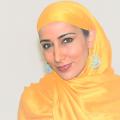IN MY OWN interreligious instruction, I have become aware of the lack of discussion of Indigenous traditions. The very way knowledge is conceived of is at play here. Margaret Kovach articulates an Indigenous epistemology in her essay “Emerging from the Margins” as “fluid, non-linear, and relational. Knowledge is transmitted through stories that shape shift in relation to the wisdom of the storyteller at the time of the telling.”
As I have engaged Indigenous communities and scholarly voices in my work, I have sought to:
Bust up the category of religion. By this I mean I try to interrogate how interreligious encounters define religion and who is invited to the table, or what parts of a person we invite.
Since I teach at a Christian seminary, religion as defined by doctrinal and scriptural sources takes precedence. I found that many of my Christian students—for instance, those from Tonga—had a deep connection to Indigenous practices woven into their identity. But at seminary this aspect was reduced to “culture” and not given a place at the table. I learned to ask students to self-identify and opened the space to recognize that all forms of their spiritual practice were valid sources of scholarship. They were not asked to cancel or erase parts of their spiritual practice that were considered by others as less important.
Do not presume “incoherence” of Indigenous belief systems. Increasingly, as a transnational eye is brought into this area of theological education, this topic will find its way into the classroom and penetrate the potentially limiting constructs of interreligious education. The danger here is that while the definition of religion may be expanded, its curious genesis remains in the particularities of a set form.
Newer landscapes that are created still carry this litmus test, and ironically so. It is the more recently born traditions that insist on the particularities of what a religion looks like, while ancient practices and their very coherent genealogies are cast aside.
Linda Tuhiwai Smith’s work addresses the processes by which the academy has relentlessly marginalized the bodies, knowledge, and voices of Indigenous communities; it would be a pity to see interreligious education repeat these dynamics. Newer traditions can think about what theological humility means. For instance, the Ifa tradition has developed a well-articulated theology of interreligious engagement with Muslims in particular, since the tradition predates the advent of Islam to Nigeria.
When working across traditions or with people who may embody commitments to various cosmologies and theologies, engagement should not start with a “lesser than” mentality. There is much to be learned about how religion can be opened up as a category and about how our particular lenses influence who is seen as valid to come to the interfaith table and who is not.

Got something to say about what you're reading? We value your feedback!







